Kubernetes Networking Deep Dive
Kubernetes Ingress
External DNS Overview
The Kubernetes DNS system enables services and pods to discover one another via in-cluster lookups. When you expose applications to the public internet, managing DNS records manually can become error-prone. ExternalDNS automates this process by synchronizing Kubernetes Services and Ingresses with your DNS provider—AWS Route 53, Cloudflare, Google Cloud DNS, and more.
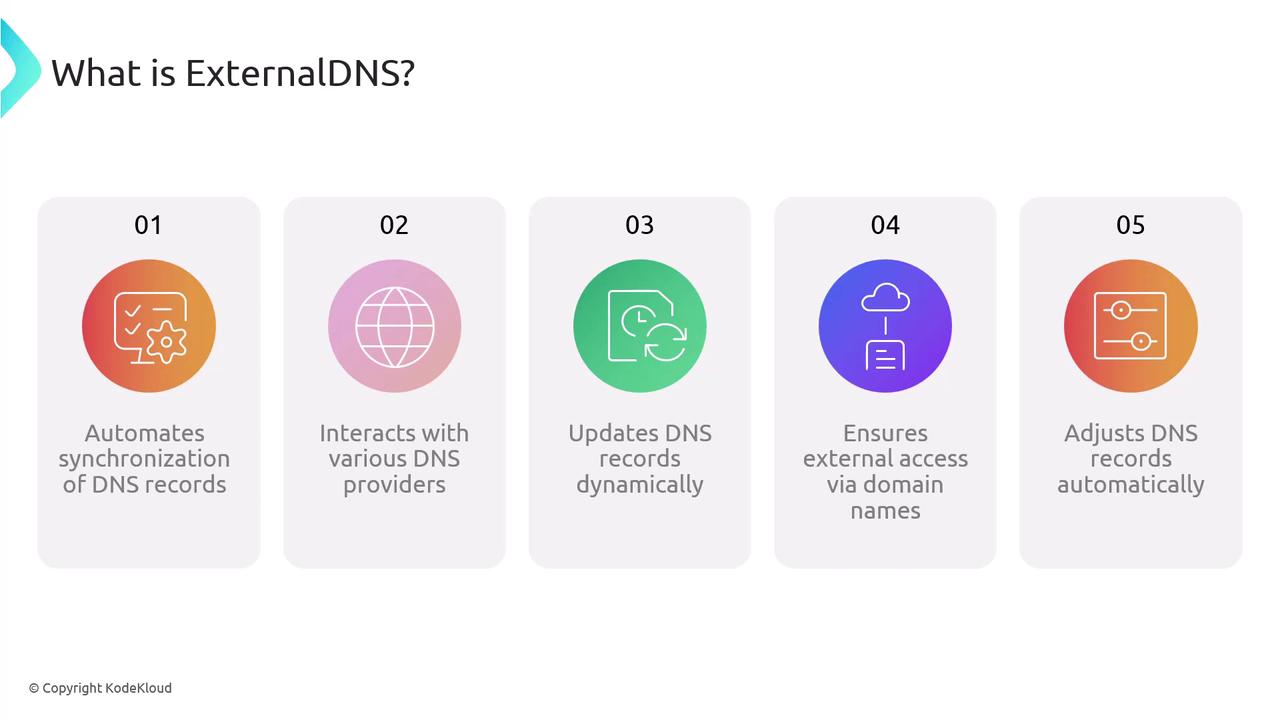
ExternalDNS continuously watches for Kubernetes resource changes. When a Service or Ingress is created, updated, or deleted, it will create, update, or remove the corresponding DNS records, ensuring your applications remain reachable even as IP addresses shift.
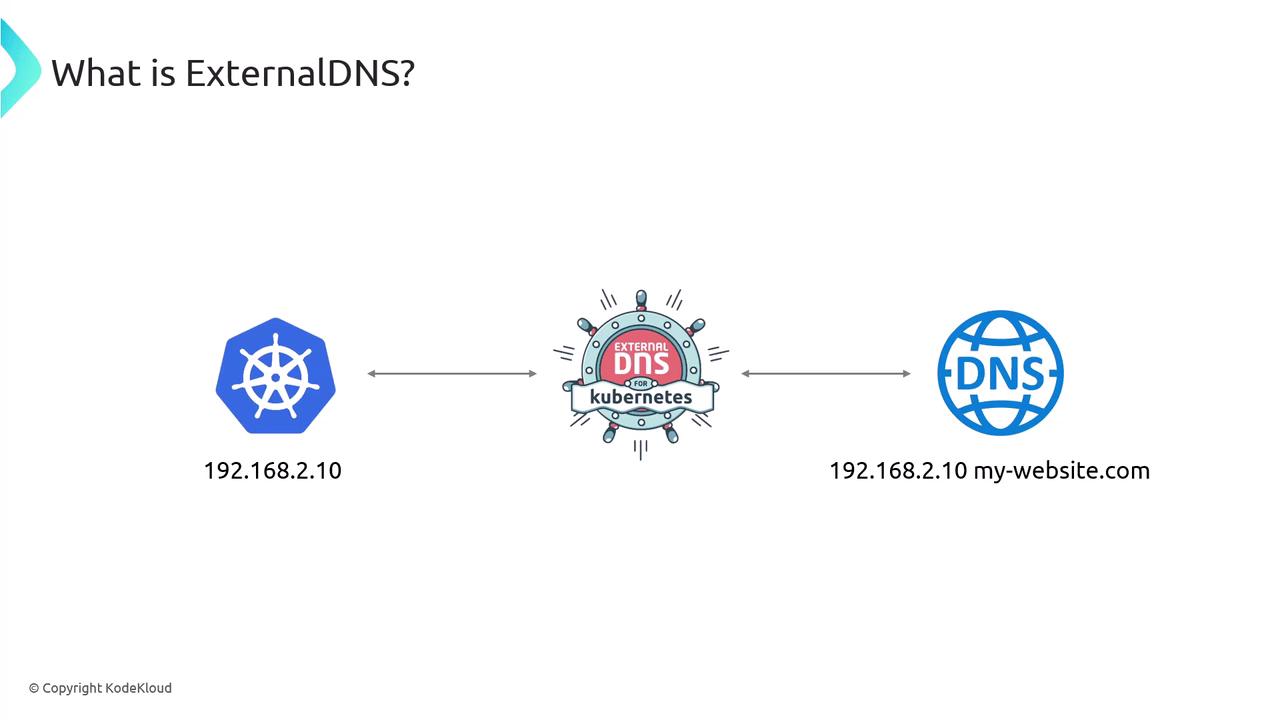
Key Features
Dynamic DNS Updates
Reacts in real time to scaling events, rolling updates, or resource deletions—keeping DNS entries accurate without manual steps.Flexibility & Control
- Manages DNS for LoadBalancer, NodePort, ClusterIP, and headless Services, as well as Ingress resources.
- Use annotation-based filters or custom FQDN templates to target specific records.
- Optionally ignore selected resources using annotation rules.
Broad Provider Compatibility
ExternalDNS integrates with the most popular DNS services, making it ideal for hybrid and multi-cloud deployments.DNS Provider Use Case Example Flag AWS Route 53 Public zones on AWS --provider=awsGoogle Cloud DNS GCP-managed domains --provider=googleAzure DNS Azure public DNS zones --provider=azureCloudflare External DNS management --provider=cloudflareDigitalOcean DNS DO-managed domains --provider=digitaloceanNS1, Infoblox, etc. Enterprise DNS solutions --provider=<name>
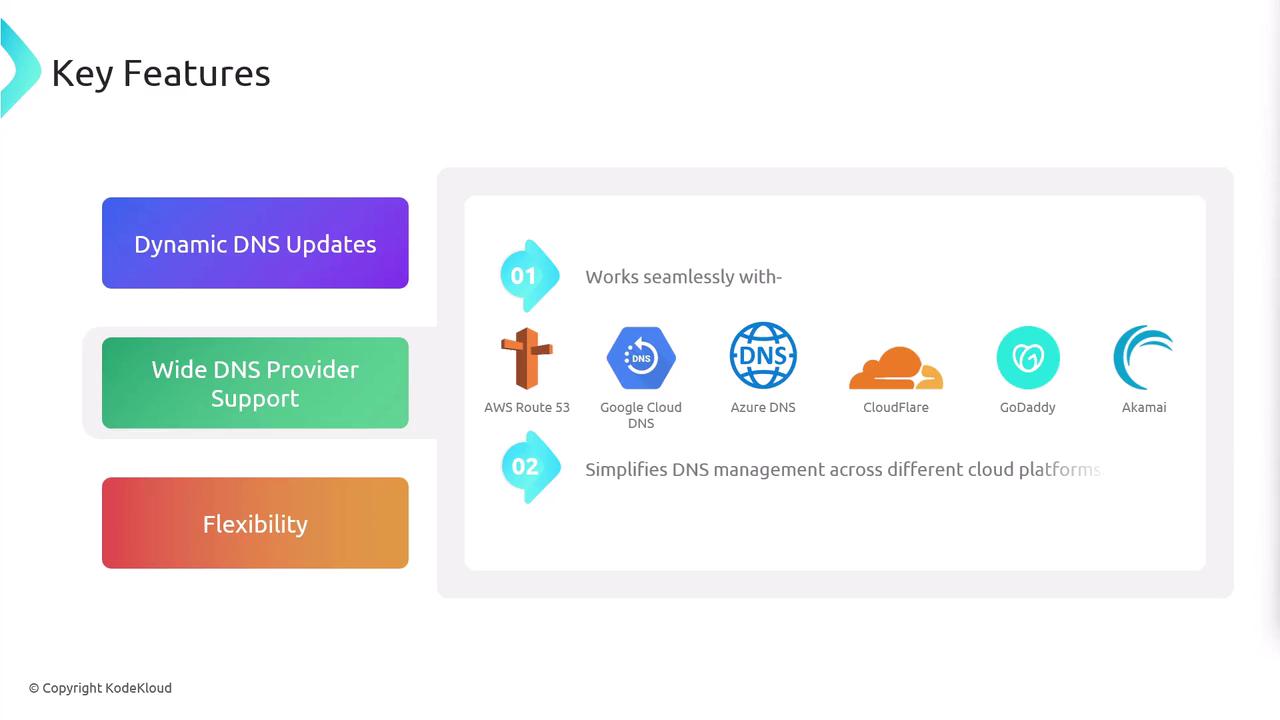
Architecture Scenarios
LoadBalancer
In cloud environments (AWS, GCP, Azure), ExternalDNS creates DNS A/AAAA records pointing to provisioned external IPs.NodePort / ClusterIP
Map DNS to node IPs plus NodePorts, or manage ClusterIP entries—even if they’re only internally routable.Headless Services
Assign stable DNS names to individual pod IPs (e.g., for Kafka or other stateful sets).
Installation
Add the ExternalDNS Helm chart and update:
helm repo add external-dns https://kubernetes-sigs.github.io/external-dns/
helm repo update
Warning
Ensure your cloud IAM role or API credentials have permissions to create and modify DNS records. See ExternalDNS GitHub for provider-specific requirements.
Install with Helm, replacing provider and provider-specific settings as needed:
helm install external-dns external-dns/external-dns \
--namespace kube-system \
--set provider=aws \
--set aws.zoneType=public
Note
You can also install ExternalDNS by applying a plain Kubernetes Deployment manifest—ideal for GitOps workflows.
Deployment Configuration
Below is a sample Deployment manifest. Adjust args to fit your environment:
apiVersion: apps/v1
kind: Deployment
metadata:
name: external-dns
namespace: kube-system
spec:
strategy:
type: Recreate
selector:
matchLabels:
app: external-dns
template:
metadata:
labels:
app: external-dns
spec:
serviceAccountName: external-dns
containers:
- name: external-dns
image: registry.k8s.io/external-dns/external-dns:v0.13.7
args:
- --source=service
- --source=ingress
- --provider=aws
- --registry=txt
- --txt-owner-id=my-cluster
General Arguments
--source(service, ingress)--namespace(limit scope)--provider(aws, google, azure, cloudflare, etc.)--policy(sync or create-only)--domain-filter(restrict to specific domains)
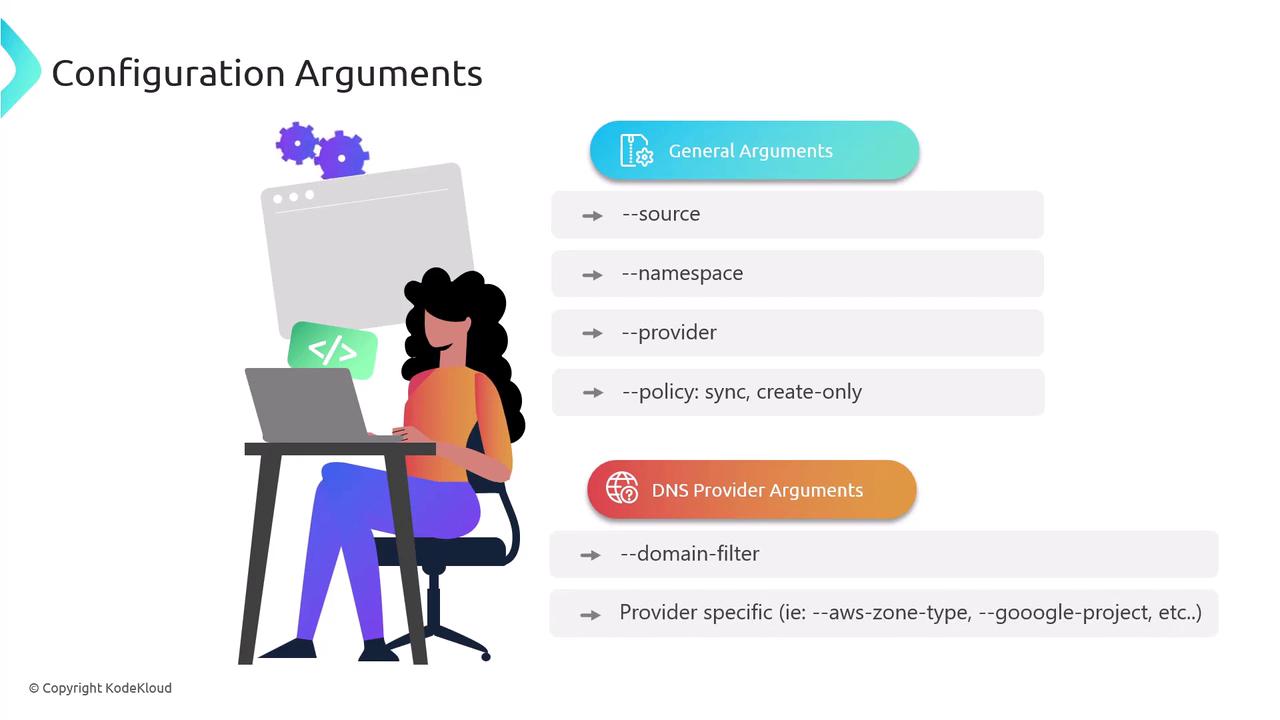
Security, Authentication & Advanced Options
--registry(txt, aws-tags)--txt-owner-id(unique TXT record owner)--annotation-filter(manage only annotated resources)--fqdn-template(custom FQDN generation)
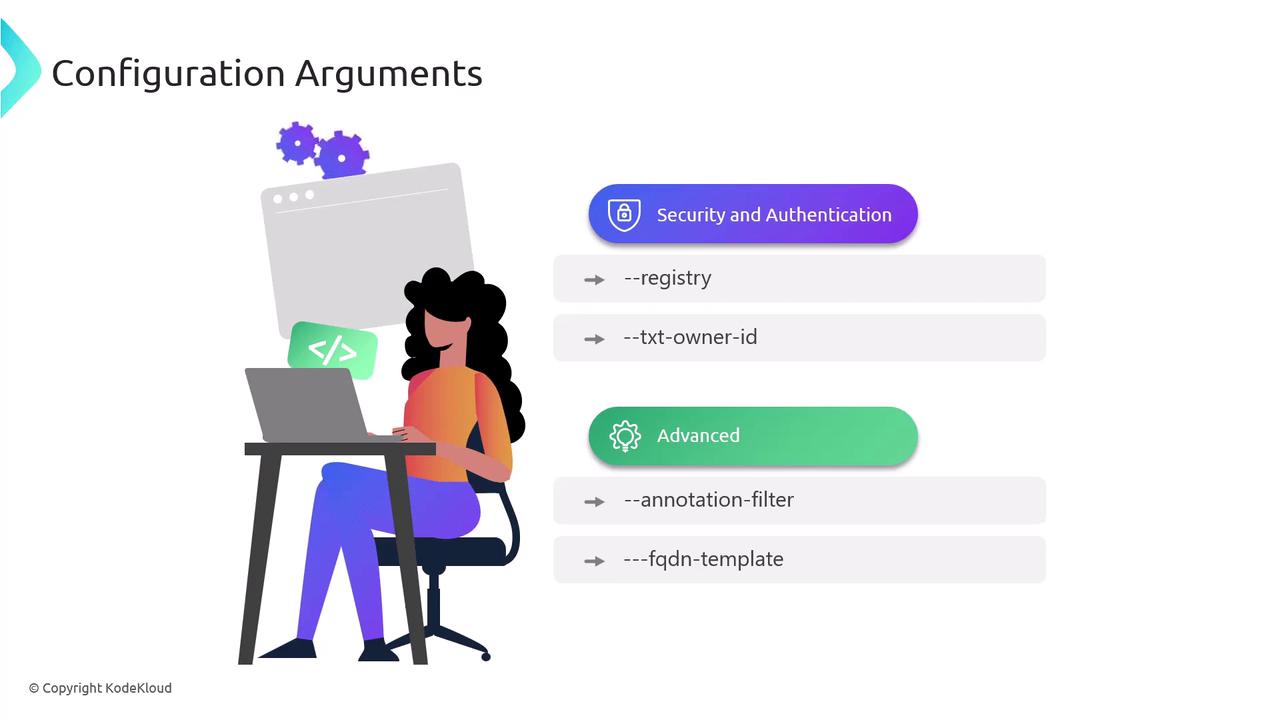
Configuring Application Resources
ExternalDNS discovers resources via annotations. Add these under metadata in your Service or Ingress:
# Basic Annotations
external-dns.alpha.kubernetes.io/hostname: example.com
external-dns.alpha.kubernetes.io/ttl: "3600"
# Advanced Annotations
external-dns.alpha.kubernetes.io/target: 192.168.0.5
external-dns.alpha.kubernetes.io/scope: global
Example: LoadBalancer Service
apiVersion: v1
kind: Service
metadata:
name: my-service
annotations:
external-dns.alpha.kubernetes.io/hostname: myservice.example.com
spec:
type: LoadBalancer
ports:
- port: 80
targetPort: 8080
selector:
app: my-app
When this Service deploys, ExternalDNS will automatically create and maintain the DNS record myservice.example.com, updating it if the external IP changes.
Now that you’ve explored ExternalDNS’s features, installation methods, and resource configuration, you’re ready to automate public DNS management for your Kubernetes workloads.
Links and References
- ExternalDNS GitHub Repository
- Kubernetes Concepts: Services and Ingress
- AWS Route 53 Documentation
- Cloudflare DNS Overview
Watch Video
Watch video content